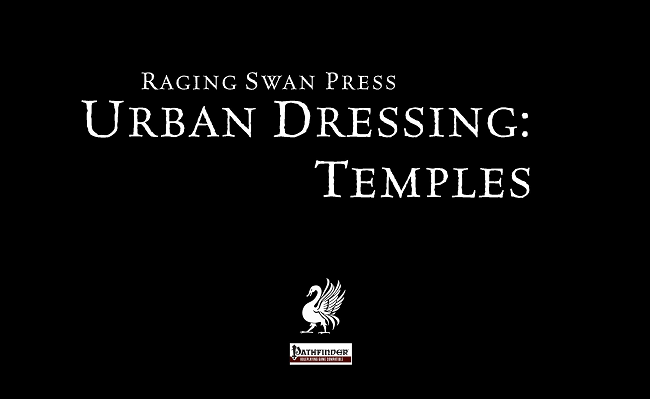It can be hard to come up with new ways to describe common play elements over and over. It’s one of the reasons why the Urban Dressing line exists. We created charts of names, descriptions, personality quirks, and other fun story elements so you can fresh text on the fly to add to your games.
I have a new dirty secret to tell. Even I, the great game designer Brian Liberge, have a hard time coming up with ideas. I mean come on, how do you describe a hundred different, low magic, interesting but not game-derailing alleys? I need a little help, just something to get my mind cranking in new ideas. It feels like cheating, but I assure you it’s not.
For Alleyways, I looked to my past work. I pulled up an old draft of Urban Dressing: Traders & Craftsmen, for which I had created a chart of a hundred trades and services. Nothing fancy, just one or two-word entries. Then I used them to inspire new details. The coppersmith became artistic metal gutters, the fisherman is now an odd stench, the carpenter inspired a pile of refuse blocking the way.
I found myself looking for inspiration again when working on Urban Dressing: Temples. I knew I wanted to have two charts, one of features based on your god’s domains, and the other descriptions that could be applied to any temple. The only problem was that the domain chart seemed to have all the cool ideas! I needed ways to generate more interesting mundane ideas, so they didn’t start stretching into the fantastic and competing with the domain chart. A quick Google search revealed an online random adjective generator and I was off. Grouchy, worthless, articulated, delicate. . . I couldn’t actually use each word to describe a temple, but they all brought new images and ideas to mind. That’s the great part, and the real reason inspiration is not cheating. If you were to use that generator to come up with your own temple descriptions, we might overlap on some themes, but the final product would be completely different.
So now you might be saying, “Brian, this is all well and good, but I’m not a game designer.”
Ah, but you’re probably the creative type (you’re a gamer, after all). If you’re the GM, your constantly designing cities, foes, quests and NPCs. Maybe you’re only a player(?), you still might want ideas to spice up your back-story. It’s easy to find new ideas without blatantly just copying something you saw in a movie. The key is to go looking for something new that isn’t exactly what you need. Anything new (i.e. not starring at your rule book or campaign wiki) will get your mind going, then return to the task at hand and try to apply it.
A cool tip I’ve stolen from others is to head to Google Maps. Jump to an area of the world you’re not familiar with and start looking at the names. Check out villages and counties. Zoom in further and read the street names. Now try swapping around the consonants or vowels (probably not both). You’ve got a whole new sound in your head perfect for naming the villages in that rival nation that the players suddenly decided to head for.
Inspiration can come from almost everywhere. It’s OK to seek it out!

